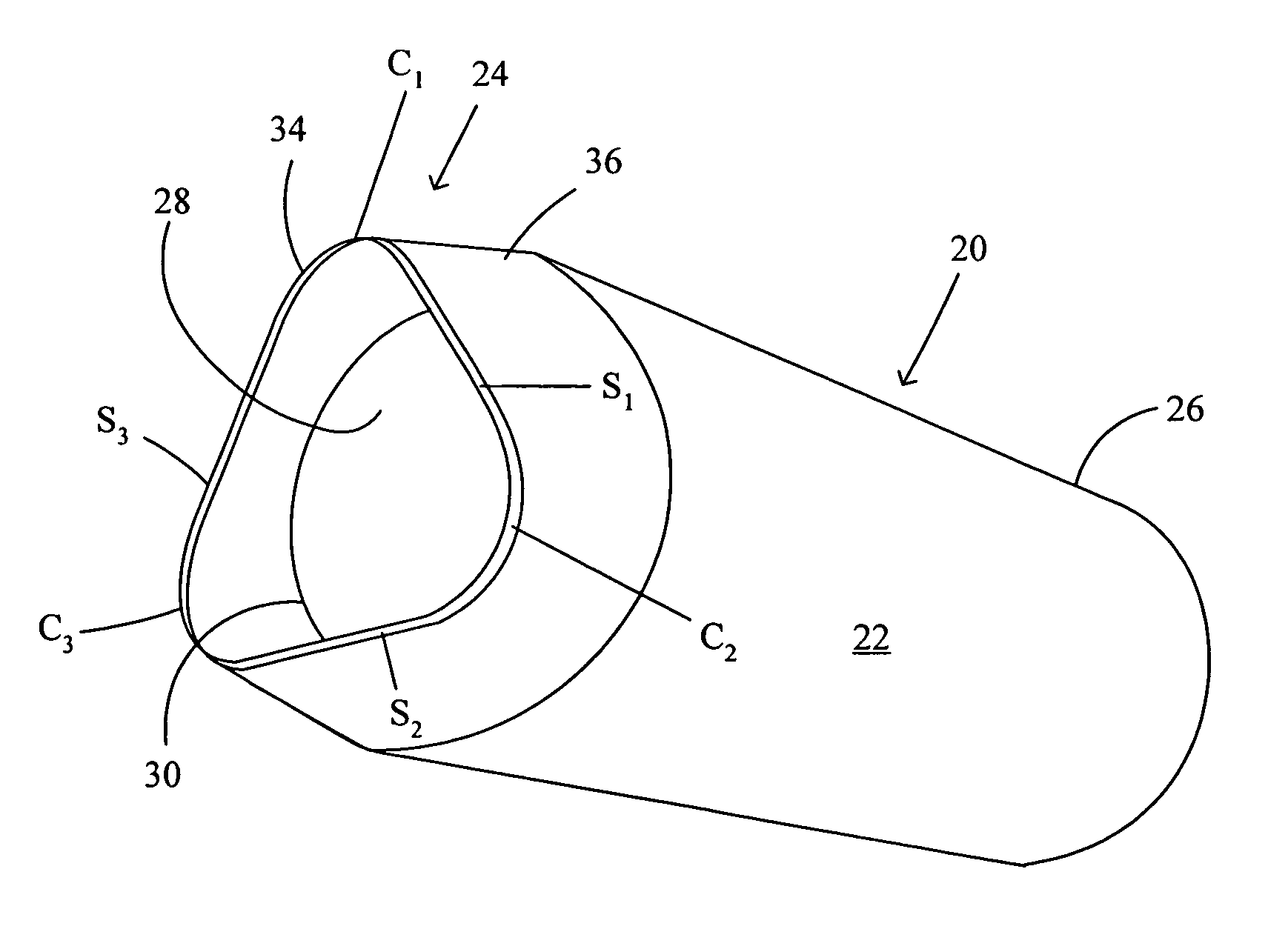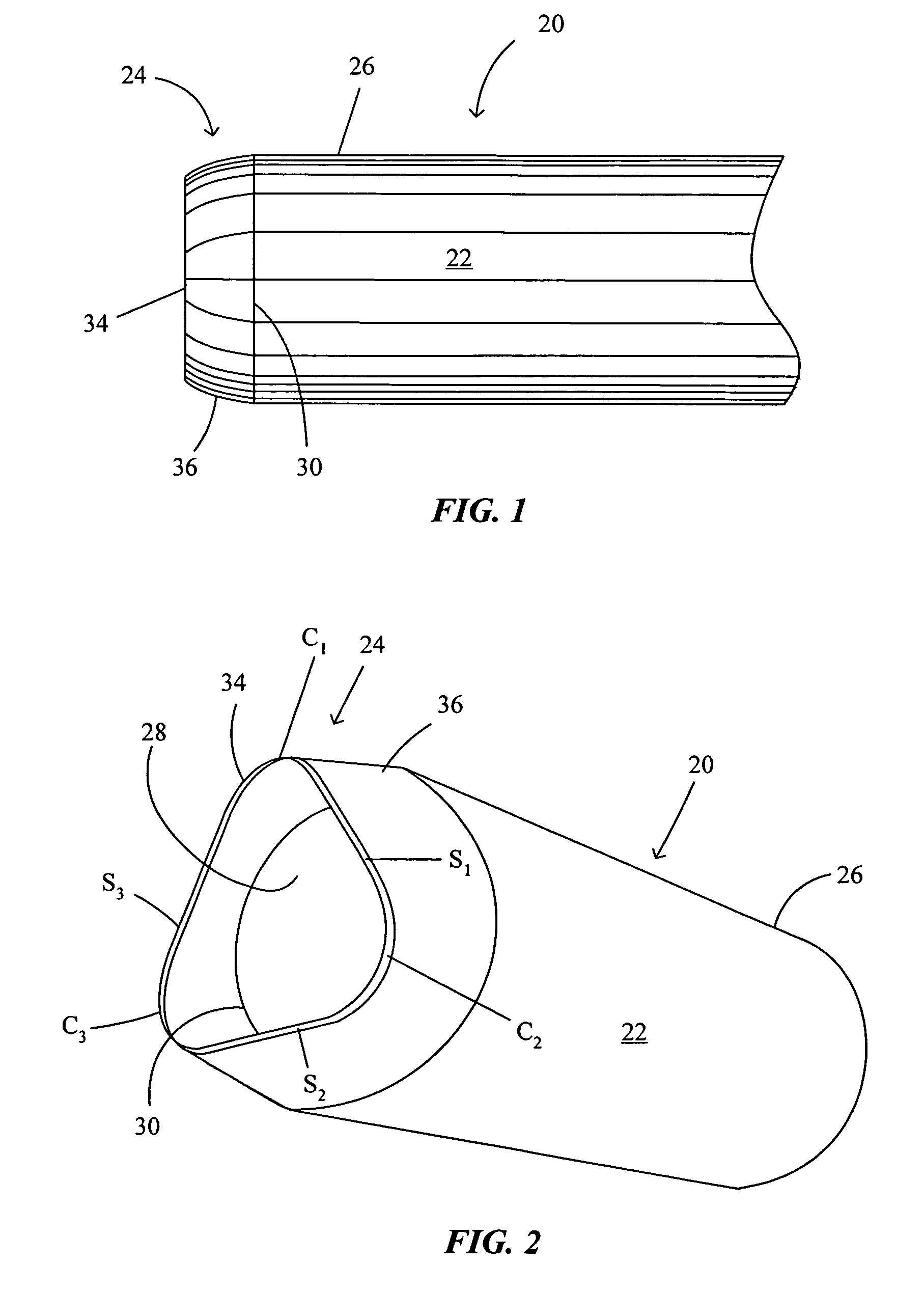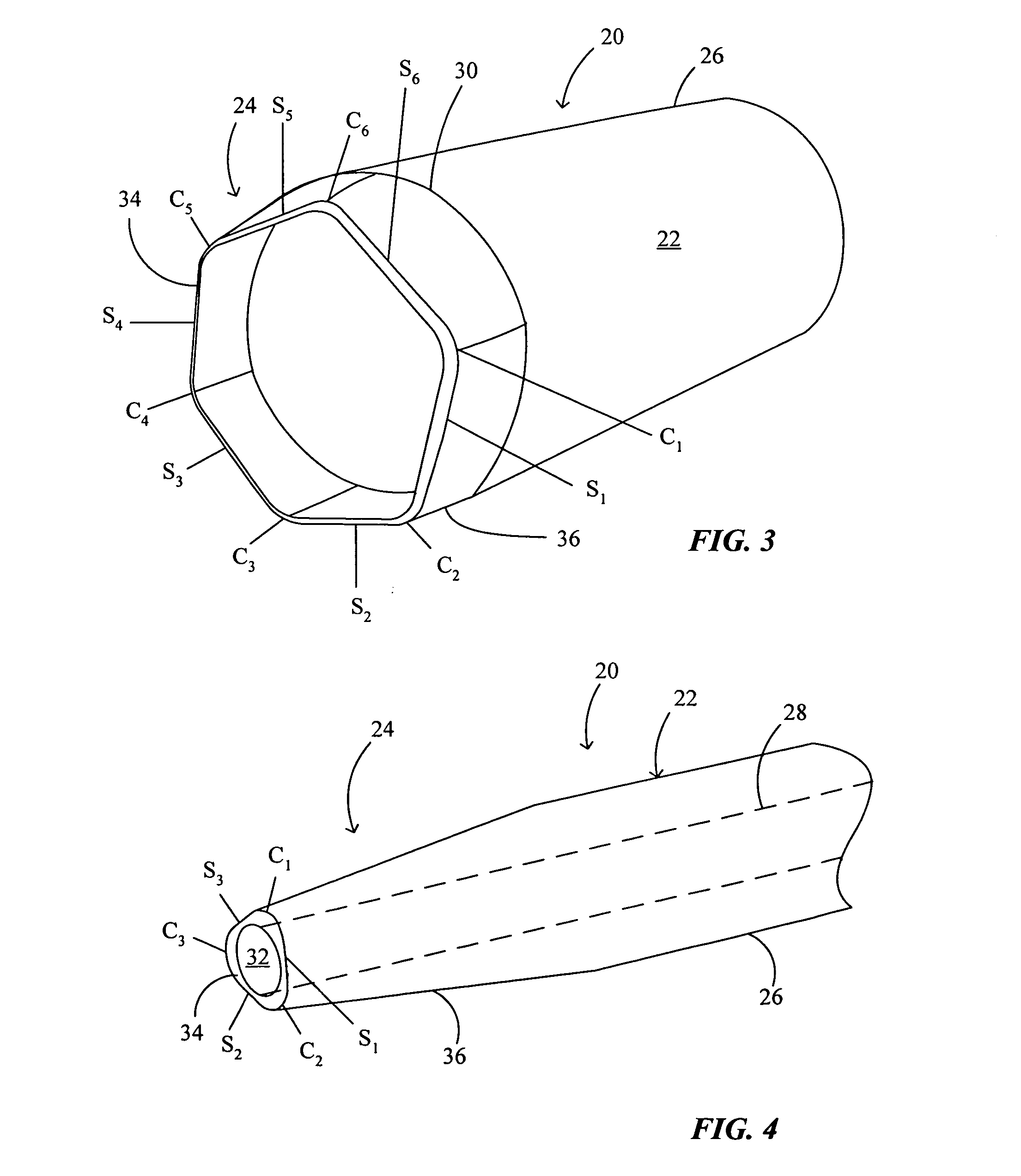Improved Catheters
a catheter and improved technology, applied in the direction of catheters, etc., can solve the problems of tissue damage, clot formation, injury to the vascular wall or tissue at the site, etc., and achieve the effects of different flexibility or elasticity properties, different cross-sectional thicknesses, and generally more flexible and resilient properties
- Summary
- Abstract
- Description
- Claims
- Application Information
AI Technical Summary
Benefits of technology
Problems solved by technology
Method used
Image
Examples
Embodiment Construction
[0025] Catheters of the present invention comprise generally tubular structures having a substantially continuous side wall forming a lumen and may be used for a variety of purposes. Such catheters may be employed, for example, as guide catheters or delivery catheters or microcatheters for delivery of accessory devices, instruments, pharmaceuticals or other agents, or the like, to a target site within the body that is generally accessible through the vasculature or a body opening or lumen. Catheters of the present invention thus include guide and delivery catheters used for any intravascular purpose and microcatheters designed for neurovascular interventions. Catheters of the present invention may also include sheaths and other types of tubular structures used for delivery of devices, instruments, or the like to target sites within the body.
[0026] As used herein, the term “proximal” refers to a direction toward an operator and the site of catheter introduction into a subject along ...
PUM
 Login to View More
Login to View More Abstract
Description
Claims
Application Information
 Login to View More
Login to View More - R&D
- Intellectual Property
- Life Sciences
- Materials
- Tech Scout
- Unparalleled Data Quality
- Higher Quality Content
- 60% Fewer Hallucinations
Browse by: Latest US Patents, China's latest patents, Technical Efficacy Thesaurus, Application Domain, Technology Topic, Popular Technical Reports.
© 2025 PatSnap. All rights reserved.Legal|Privacy policy|Modern Slavery Act Transparency Statement|Sitemap|About US| Contact US: help@patsnap.com



